This article was co-authored by Laura Marusinec, MD. Dr. Marusinec is a board certified Pediatrician at the Children's Hospital of Wisconsin, where she is on the Clinical Practice Council. She received her M.D. from the Medical College of Wisconsin School of Medicine in 1995 and completed her residency at the Medical College of Wisconsin in Pediatrics in 1998. She is a member of the American Medical Writers Association and the Society for Pediatric Urgent Care.
There are 11 references cited in this article, which can be found at the bottom of the page.
This article has been viewed 55,935 times.
It isn't always easy to tell whether your child is overweight. Over time, body changes can seem like a normal part of growing up. Typically, people are not very good at perceiving whether their child is overweight. A child’s perception of their own weight is also often wrong. There are a number of methods you can use to accurately measure your child’s weight. If your child is overweight, there are a number of actions you can take to improve their health.[1]
Steps
Measuring Body Fat
-
1Figure out your child’s weight-to-height ratio (or body mass index). Body mass index (BMI) is age and sex specific, so it is often called BMI-for-age. Use a bathroom scale to measure your child’s weight. Then, measure your child’s height with a tape measure. Have your child stand against a wall, mark the top of their head with a pencil, and measure their height with a tape measure. Finally, divide the child’s weight in kilograms by their height in meters squared.[2]
- If you prefer working in feet and inches, you can divide the child’s weight in pounds by their height in inches squared and then multiply it by 703.
- You can also use an online BMI calculator, but make sure it is specifically for children and teenagers— such as the one here: https://www.cdc.gov/healthyweight/bmi/calculator.html — and not for adults. Simply fill in the required information on size, weight, age and all other fields. Then press calculate.
- Download charts that show BMI-for-age. Go to the Centre for Disease Control and Prevention, and search BMI-for-age. You will see charts that are available for free to download for both boys and girls. Compare your child’s BMI to what is normal for their age, height, and sex.
- A child whose BMI is equal to or greater than the 5th percentile and less than the 85th percentile is considered a healthy weight for their age.
- Most pediatricians also measure and track BMI at regular check-ups and can provide you with the information and/or charts.
-
2Have your doctor measure your child’s waist circumference. Your doctor will measure the fat around your child’s belly. They will measure the circumference at the natural waist, which is in between the lowest rib and the top of the hip bone. This method is inexpensive and fairly accurate; however, some doctors may not be able to tell you whether your child is overweight from this information alone.[3]Advertisement
-
3Ask your doctor to measure your child’s waist-to-hip ratio. Your doctor will measure your child’s abdominal obesity. They will measure the circumference of your child’s waist and then their hips. They will then divide your child’s waist by hip measurements. There are two places where your doctor could possibly measure wrong but they should be able to do it fairly accurately.
-
4Request a skinfold thickness measurement. Your doctor will use a caliper to measure the thickness of a pinch of skin or fat in various parts of the body. They may measure the trunk, thighs, front and back of the upper arm, and then under the shoulder blade. Doctors will then use an equation to predict overall body fat percentage. It is a fast and easy method, which is safe and inexpensive. However, it is not as accurate as other methods.[4]
-
5Ask your doctor to perform a bioelectrical impedance test. Your doctor will send a safe electrical current through your child’s body. The current encounters more resistance passing through fat than through water and muscle. Your doctor will use an equation to measure body fat percentage. It is convenient, safe, and relatively inexpensive. It relies on relatively normal ratio of body water to fat, but this can change during illness or otherwise. It is not as accurate as some other methods.[5]
- Your doctor may use one or more methods to measure body fat, alongside the body mass index, to determine whether or not your child is overweight.
-
6Talk to your doctor about emerging patterns. looking at the pattern of growth, including weight, is more important than looking at one value. Looking at how the weight has changed over time can be very important when determining if your child is overweight. Certain factors, such as entering puberty, can have a bearing on whether your child is at a healthy weight. Your doctor can look at BMI measurements from previous visits to determine whether your child may be at risk for becoming overweight.[6]
Talking to Your Child About Weight and Health
-
1Talk to your child about healthy eating habits. You should focus on having an upbeat and informative conversation about healthy eating habits such as relatively small and diverse portions. Throughout the conversation, you should communicate your love and support. Make sure they know it is not their fault and that obesity is a complex issue. Avoid words like greedy, fat, or lazy, which will erode self-esteem.[7]
- If the child is under nine years of age, make changes to the family diet as a whole. You don’t need to talk to your child. Rather, change what the family eats.
- If your child is 10 or older, you may want to talk to them directly about food and weight. They will likely already be thinking about these topics so now is the time for open dialogue. You must still make changes as a family, however, even for older children.
-
2Praise your child for healthy eating and lifestyle choices. If you see your child making good food decisions such as finishing their healthy dinner or skipping a sugary snack, you should offer praise. Encourage them to continue making wise food choices.
- For example, if you see your child make a healthy salad for lunch, you might say: “That looks both healthy and delicious. It is great to see you figuring out recipes that work for you. You’ll have to teach me how to make it!”
-
3Avoid criticizing your child’s appearance. If you notice your child gaining weight and want to say something, it is best to avoid saying negative things to your child.
- For example, if you pick your child up from school and you notice their weight in comparison to their peers, try to avoid making negative comments. Avoid saying things like, “Wow, you really have put on some pounds these last few months!” These kinds of negative statements harm your child’s self-esteem.
-
4Focus on choices and habits, rather than looks or numbers on a scale. Criticizing or fretting over your child's weight/appearance won't help their mental health, and it may lead to a defeatist "I'm fat and awful" attitude. Instead, talk about good habits. Emphasize that people of all sizes can make good choices and take good care of their health.[8]
- Avoid equating looks to health. Some Olympic athletes are very heavy, and some thin people have bad habits.
- If your child is heavy, let them look at pictures of athletes who are heavy too. This shows them that people who look like them can get fit and make healthy choices.
-
5Discuss healthy recipes and food choices with your child. You can talk to your child about weight and health while making home recipes or visiting the grocery store. Throughout these conversations, try to empower your child to make healthy food choices.[9]
- Discuss food preparation with your child. For instance, you might bring them to the grocery store and talk about the different options for weekly meals.
- Talk to your child about healthy recipes. Ask your child, "How do you think we could make this recipe a little bit healthier?" If you raise the issue in this manner, it shifts the focus from their body to a common recipe.
-
6Use articles or news stories to talk about the importance of a healthy diet. If you see a magazine article about a healthy recipe or diet, you can use the article as an opportunity to talk to your child about healthy eating habits.
Making Healthy Choices as a Family
-
1Start a new family meal plan. Prioritize family eating in the home. You should aim for eating fewer calories and reducing unhealthy things like salt and saturated fats. You should also aim to increase the number of fruits and vegetables in your family dinners.[10]
- Feed your children fruits, vegetables, legumes and whole grains. Children who eat fruits, vegetables, whole grains, and legumes will grow up healthier and live longer. Base your diet on plant foods as opposed to animal products.
- While you don't want the emphasis to be on animal products, it is still important to include lean proteins in your family's diet. Prepare lean cuts of meat (such as white-meat, skinless poultry) and choose low-fat dairy products.
- Talk to your doctor or a dietitian if you need help planning a healthy diet for your child and family.
-
2Involve the whole family in improving the family's meals. Causes of childhood obesity include inappropriate diets with excessive saturated fats, and simply too much food. For some, there is a genetic or metabolic component behind their obesity as well. Once you have determined a new family meal plan, you will need to involve everyone in the changes.[11]
- It will be easier to make the changes when everyone is involved, including you, and when everyone understands the importance of dietary change. It can be hard to change old habits, so stick with it until the new, healthier habits feel normal.
- Be fair. Don't subject one child to tougher standards than another child, or they will resent you.
-
3Cut down on sugary snacks. Sugary snacks are widely available in schools and in many homes. Reducing childhood sugar consumption leads to major health benefits, including obesity reduction.[12]
- Be mindful of juice purchases. Some juices have a lot of added sugar, which isn't a good choice. Look for 100% juice, if any.
-
4Start new family activities that get the whole family outside. Engaging your whole family in a healthy lifestyle will create the conditions for your children to develop into healthy adults. Encourage activity to happen as a family, or for smaller groups. For example, maybe you'd like to take your daughter out for walks after lunch every day.[13]
- Visit the local park or swimming pool.
- Dance to music.
- Take walks around the neighborhood.
- Go for family bike rides.
- Play backyard sports.
-
5Find types of exercise that your kids actually enjoy. Different children have different tastes, and your goal is not to force them into whatever exercise plan you created, but to find a type of exercise that is fun and healthy.
- Extroverted children may prefer group sports, while introverted children might like one-on-one or individual activities.
- Don't keep score if it stresses out your child. Some kids find it more fun to play without keeping track of who is winning.
- Children, especially heavy children, may get bullied in organized sports. If your child has an awful time, they might start hating exercise altogether. Listen to your child, and take them seriously if they say they're being bullied or they want to quit.
-
6Buy games that involve physical activity. Children love to play, so if you can find toys that get them moving, they can have a lot of fun exercising. Consider both outdoor and indoor opportunities. If you have the financial resources, try buying things like these:
- Video games like Dance Dance Revolution
- Indoor trampolines
- Balls for sports (kickballs, basketballs, baseballs and bats; department stores sell cheap colorful balls that work for different sports)
- Scooters/skateboards (with the appropriate safety gear)
- Step counters (challenge them to beat a certain number)
-
7Model a healthy lifestyle for your children.[14] Your children will follow your direction. You are a role model for them in life, so you should take care of your own health.
-
8Start a daily exercise program with your children. Children who regularly exercise tend to perform better academically and have lower levels of stress.
- Sign your children up for sports teams, if they're interested.
- Sign your children up for swimming lessons.
Expert Q&A
-
QuestionMy child is 11 years old, 5'1" and weighs 10 and a half stone. Is she overweight?
 Laura Marusinec, MDDr. Marusinec is a board certified Pediatrician at the Children's Hospital of Wisconsin, where she is on the Clinical Practice Council. She received her M.D. from the Medical College of Wisconsin School of Medicine in 1995 and completed her residency at the Medical College of Wisconsin in Pediatrics in 1998. She is a member of the American Medical Writers Association and the Society for Pediatric Urgent Care.
Laura Marusinec, MDDr. Marusinec is a board certified Pediatrician at the Children's Hospital of Wisconsin, where she is on the Clinical Practice Council. She received her M.D. from the Medical College of Wisconsin School of Medicine in 1995 and completed her residency at the Medical College of Wisconsin in Pediatrics in 1998. She is a member of the American Medical Writers Association and the Society for Pediatric Urgent Care.
Board Certified Pediatrician According to BMI, she would be classified as "overweight," but not necessarily "obese." See the BMI calculator for this: http://www.nhlbi.nih.gov/health/educational/lose_wt/BMI/bmicalc.htm Talk to your child's doctor if you have concerns about her weight.
According to BMI, she would be classified as "overweight," but not necessarily "obese." See the BMI calculator for this: http://www.nhlbi.nih.gov/health/educational/lose_wt/BMI/bmicalc.htm Talk to your child's doctor if you have concerns about her weight. -
QuestionMy daughter is 10 years old and weighs 55 lbs. is she overweight?
 Laura Marusinec, MDDr. Marusinec is a board certified Pediatrician at the Children's Hospital of Wisconsin, where she is on the Clinical Practice Council. She received her M.D. from the Medical College of Wisconsin School of Medicine in 1995 and completed her residency at the Medical College of Wisconsin in Pediatrics in 1998. She is a member of the American Medical Writers Association and the Society for Pediatric Urgent Care.
Laura Marusinec, MDDr. Marusinec is a board certified Pediatrician at the Children's Hospital of Wisconsin, where she is on the Clinical Practice Council. She received her M.D. from the Medical College of Wisconsin School of Medicine in 1995 and completed her residency at the Medical College of Wisconsin in Pediatrics in 1998. She is a member of the American Medical Writers Association and the Society for Pediatric Urgent Care.
Board Certified Pediatrician No. In fact, she is in the lower percentages of the growth curve, though you would also need to know her height to know for sure. You can plot her weight and height on a growth curve to see it: http://www.cdc.gov/growthcharts/clinical_charts.htm#Set1
No. In fact, she is in the lower percentages of the growth curve, though you would also need to know her height to know for sure. You can plot her weight and height on a growth curve to see it: http://www.cdc.gov/growthcharts/clinical_charts.htm#Set1
References
- ↑ http://www.forbes.com/sites/alicegwalton/2015/03/30/can-you-tell-if-your-child-is-overweight-most-parents-cant-study-finds/#53e0b48fd467
- ↑ https://www.hsph.harvard.edu/obesity-prevention-source/obesity-definition/how-to-measure-body-fatness/
- ↑ https://www.hsph.harvard.edu/obesity-prevention-source/obesity-definition/how-to-measure-body-fatness/
- ↑ https://www.nature.com/articles/1601842
- ↑ https://www.nature.com/articles/ejcn2011213
- ↑ http://kidshealth.org/en/parents/childs-weight.html#
- ↑ https://www.health.ny.gov/prevention/nutrition/resources/obparnts.htm
- ↑ https://www.health.ny.gov/prevention/nutrition/resources/obparnts.htm
- ↑ https://www.helpguide.org/articles/diets/childhood-obesity-and-weight-problems.htm
- ↑ https://www.niddk.nih.gov/health-information/weight-management/helping-your-child-who-is-overweight
- ↑ https://www.niddk.nih.gov/health-information/weight-management/helping-your-child-who-is-overweight
- ↑ https://www.ucsf.edu/news/2015/10/136676/obese-childrens-health-rapidly-improves-sugar-reduction-unrelated-calories
- ↑ https://www.helpguide.org/articles/diets/childhood-obesity-and-weight-problems.htm
- ↑ https://kidshealth.org/en/parents/overweight-obesity.html
About This Article
To tell if your child is overweight, start by measuring their height and weight in order to calculate their BMI. Then, divide your child’s weight in pounds by their height in inches squared and multiply this number by 703. Once you know your child’s BMI, compare it to an online chart to see if your child is overweight. Alternatively, use an online calculator specifically for children and teenagers to figure out your child’s BMI. If your child’s BMI is on the high side, avoid criticizing their appearance, which can damage their self-esteem. Instead, talk to your child about healthy eating habits and being more active, like how to eat more fruits and vegetables throughout the day and finding a form of exercise they enjoy. For more tips from our Medical co-author, including how to model a healthy lifestyle for your child, keep reading!
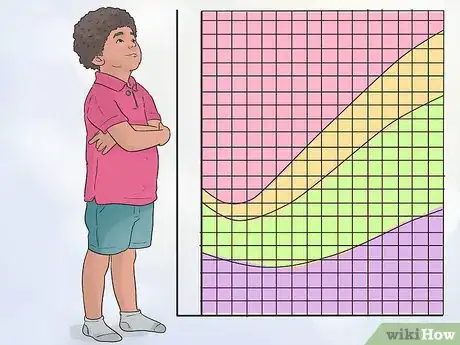
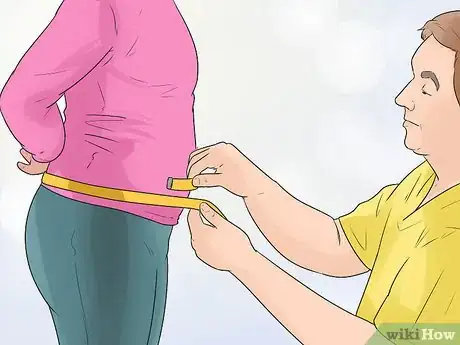
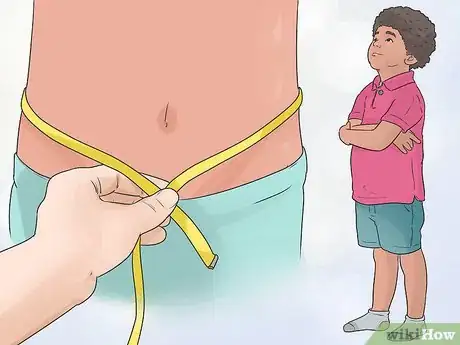
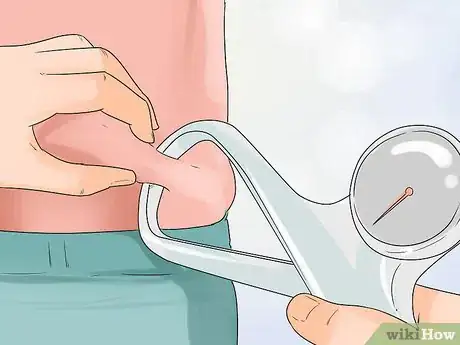
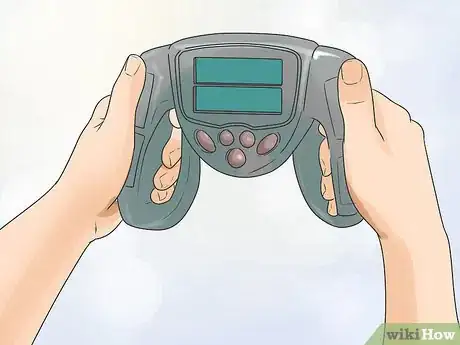

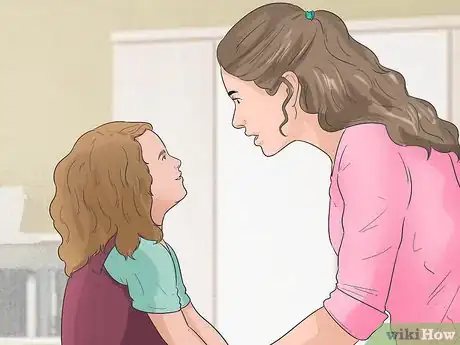

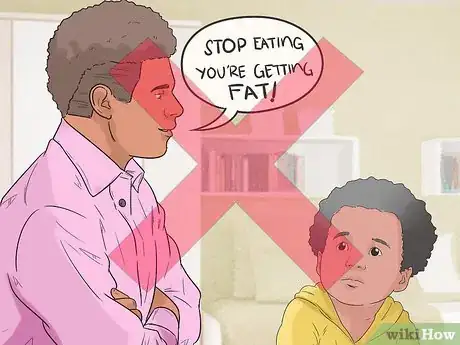
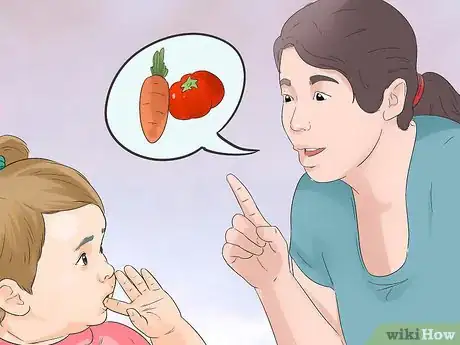

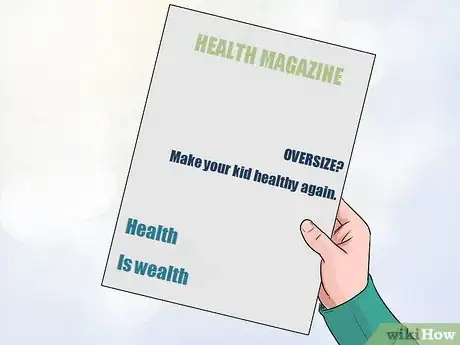
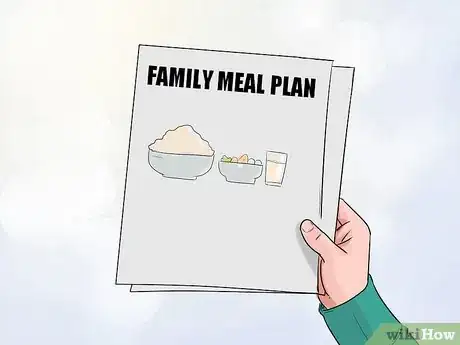
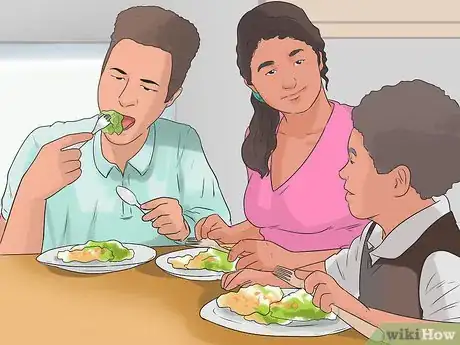



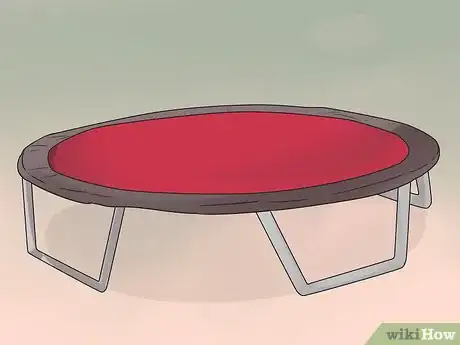



-Step-14-Version-3.webp)












-Step-14-Version-3.webp)





































Medical Disclaimer
The content of this article is not intended to be a substitute for professional medical advice, examination, diagnosis, or treatment. You should always contact your doctor or other qualified healthcare professional before starting, changing, or stopping any kind of health treatment.
Read More...